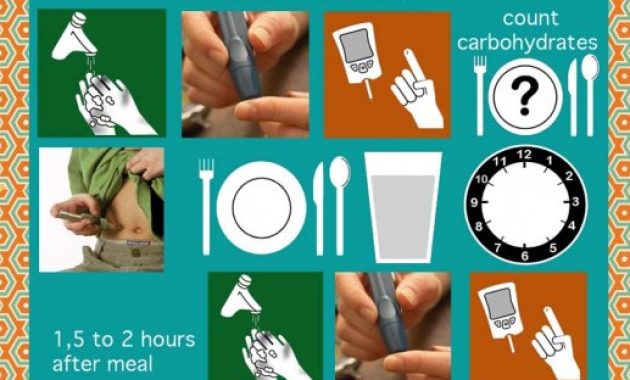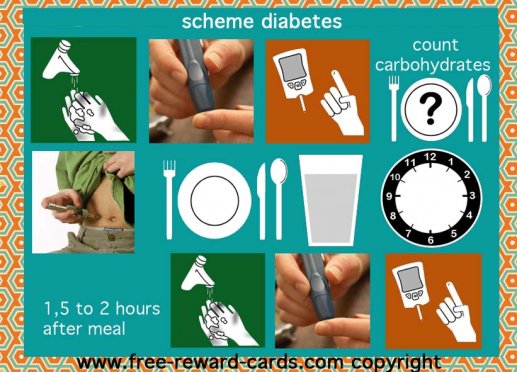
How to Build a Night Routine for Diabetes Balance: Prioritizing Sleep and Blood Sugar Management
Living with diabetes demands vigilance. It requires constant management of blood sugar levels. This includes careful monitoring of diet, exercise, and medication. However, one crucial element is often overlooked: a consistent night routine. A well-structured night routine can significantly impact sleep quality. It also helps in maintaining optimal blood sugar control. This article provides a comprehensive guide on how to build a night routine for diabetes balance. We will explore the benefits, and provide actionable steps to create a personalized plan.
The Vital Link Between Sleep and Diabetes
Sleep is not merely a period of rest. It’s a complex biological process. It plays a vital role in overall health, including blood sugar regulation. When you sleep, your body releases hormones. These hormones help regulate various metabolic processes. Insufficient or disrupted sleep can negatively impact these processes. This can lead to insulin resistance. Insulin resistance is a key factor in the development and progression of type 2 diabetes.
Poor sleep quality can elevate blood sugar levels. It also increases the risk of developing diabetes complications. These complications include cardiovascular disease and nerve damage (neuropathy). Conversely, a consistent and restorative sleep schedule promotes better blood sugar control. It also improves overall well-being. Understanding this connection is the first step in how to build a night routine for diabetes balance.
Benefits of a Well-Structured Night Routine
Establishing a dedicated night routine offers numerous advantages. These benefits extend beyond just improved sleep. They contribute to better diabetes management and overall health. Here are some key benefits:
- Improved Blood Sugar Control: A consistent routine helps stabilize blood sugar levels. This is achieved through better sleep and reduced stress.
- Enhanced Insulin Sensitivity: Quality sleep improves the body’s sensitivity to insulin. This helps cells use glucose more effectively.
- Reduced Stress and Anxiety: A relaxing night routine can calm the mind. This reduces stress hormones like cortisol. Elevated cortisol can raise blood sugar levels.
- Better Sleep Quality: A structured routine signals to your body that it’s time to sleep. This promotes deeper, more restful sleep.
- Increased Energy Levels: Adequate sleep leads to increased energy. This makes it easier to manage daily activities and maintain healthy habits.
- Improved Mood and Cognitive Function: Sufficient sleep enhances mood and cognitive performance. This helps with decision-making and overall mental clarity.
Creating Your Personalized Night Routine: Key Steps
Building a night routine is not a one-size-fits-all process. It requires personalization to suit individual needs and preferences. Here’s a step-by-step guide on how to build a night routine for diabetes balance:
Step One: Establish a Consistent Bedtime and Wake-Up Time
Consistency is paramount for regulating your body’s natural sleep-wake cycle (circadian rhythm). Aim to go to bed and wake up around the same time every day. This includes weekends. This helps regulate your body’s internal clock. It makes it easier to fall asleep and wake up feeling refreshed. If you are struggling to fall asleep, try adjusting your bedtime in 15-minute increments until you find the perfect timing.
Step Two: Optimize Your Sleep Environment
Your bedroom should be a sanctuary for sleep. Ensure the environment is conducive to rest. Consider these factors:
- Temperature: Keep the room cool, ideally between 60-67°F (15-19°C).
- Darkness: Use blackout curtains or an eye mask to block out light.
- Quiet: Use earplugs or a white noise machine to minimize noise.
- Comfort: Invest in a comfortable mattress, pillows, and bedding.
Step Three: Wind Down with Relaxing Activities
Avoid stimulating activities close to bedtime. This includes screen time (phones, tablets, computers). Instead, engage in relaxing activities to signal to your body that it’s time to sleep. Consider these options:
- Read a Book: Choose a physical book instead of an e-reader to avoid blue light exposure.
- Take a Warm Bath or Shower: The drop in body temperature after a warm bath can induce drowsiness.
- Listen to Calming Music: Choose instrumental music or nature sounds.
- Practice Relaxation Techniques: Try deep breathing exercises, meditation, or progressive muscle relaxation.
Step Four: Monitor Blood Sugar Levels
Check your blood sugar before bed. This provides valuable insights into how your body is managing glucose overnight. If your blood sugar is high, consider taking corrective action. This could involve adjusting your medication or diet as directed by your healthcare provider. If your blood sugar is low, have a small, healthy snack available. This helps to prevent overnight hypoglycemia.
Step Five: Plan Your Evening Meal and Snacks
What you eat and drink in the evening impacts your blood sugar levels. Plan your evening meal and any bedtime snacks carefully. Focus on:
- Balanced Meals: Include a combination of protein, healthy fats, and complex carbohydrates.
- Portion Control: Avoid overeating, which can disrupt sleep and blood sugar control.
- Bedtime Snacks (If Needed): Choose a snack with a combination of protein and complex carbohydrates. This could be a small portion of nuts, a hard-boiled egg, or a few whole-grain crackers with cheese.
- Limit Sugary Drinks: Avoid sugary drinks, especially close to bedtime.
- Avoid Caffeine and Alcohol: These substances can interfere with sleep quality.
Step Six: Manage Medications
If you take diabetes medication, follow your healthcare provider’s instructions regarding dosage and timing. Some medications may need to be taken at specific times to optimize their effectiveness. Always consult your doctor about any changes in medication schedule. Make sure to keep your medication within reach, so it’s easily accessible.
Step Seven: Limit Screen Time
Blue light emitted from electronic devices can suppress melatonin production. Melatonin is a hormone that regulates sleep. Avoid using electronic devices (phones, tablets, computers) for at least an hour before bed. If you must use a screen, use a blue light filter. These filters can minimize the impact on your sleep.
Step Eight: Stay Hydrated
Drink enough water throughout the day. But avoid excessive fluid intake close to bedtime. This can lead to frequent trips to the bathroom during the night. This disrupts your sleep. Keep a glass of water by your bedside. Sip it if you wake up thirsty.
Step Nine: Review and Adjust
Your night routine is not set in stone. Regularly review and adjust your routine as needed. Track your sleep quality, blood sugar levels, and overall well-being. Make changes based on your observations. It might take time to find the optimal routine. Be patient and persistent in your efforts. If you are unsure about the effectiveness of your routine, seek guidance from a healthcare professional.
Foods and Drinks to Incorporate into Your Night Routine
The foods and drinks you consume in the evening can significantly impact your sleep quality and blood sugar levels. Consider incorporating these options into your how to build a night routine for diabetes balance:
- Herbal Teas: Chamomile, lavender, and valerian root teas have calming properties. These can promote relaxation and sleep.
- Almonds: Almonds are a good source of magnesium. Magnesium can help improve sleep quality.
- Walnuts: Walnuts contain melatonin. Melatonin is a hormone that regulates sleep.
- Dairy or Soy Products: Dairy or soy products contain tryptophan. Tryptophan is an amino acid that promotes sleep.
- Complex Carbohydrates: Whole grains, such as oatmeal, provide sustained energy. This helps to prevent blood sugar spikes during the night.
Foods and Drinks to Avoid in Your Night Routine
Certain foods and drinks can disrupt sleep and negatively affect blood sugar levels. Avoid these items as part of your how to build a night routine for diabetes balance:
- Caffeinated Beverages: Coffee, tea, and energy drinks can interfere with sleep.
- Alcohol: While alcohol might initially make you feel sleepy, it can disrupt sleep later in the night.
- Sugary Foods and Drinks: These can cause blood sugar spikes. These can lead to sleep disturbances.
- Processed Foods: Processed foods often contain high levels of sodium. Sodium can interfere with sleep quality.
- Large Meals: Eating a large meal close to bedtime can cause digestive discomfort. This can disrupt sleep.
Additional Tips for Success
Here are some additional tips to help you succeed in building a night routine:
- Consistency is Key: Stick to your routine as much as possible. Even on weekends.
- Be Patient: It takes time to establish a new routine. Give it a few weeks to see results.
- Listen to Your Body: Pay attention to how you feel. Adjust your routine as needed.
- Consult with Professionals: Talk to your doctor, a certified diabetes educator, or a sleep specialist. They can provide personalized guidance.
- Track Your Progress: Keep a sleep diary and monitor your blood sugar levels. This helps you assess the effectiveness of your routine.
- Consider Mindfulness: Practice mindfulness or meditation to reduce stress and improve sleep quality.
Seeking Professional Guidance
Building a night routine is a journey. Sometimes, you may need professional assistance. Consulting with healthcare professionals is important. A certified diabetes educator (CDE) can provide personalized advice. They can help you manage your diabetes effectively. A sleep specialist can diagnose and treat sleep disorders. Your primary care physician can also offer valuable insights. They can also provide referrals to specialists. Working with these professionals ensures you receive comprehensive support. They can also help you develop a night routine tailored to your specific needs. This is crucial for achieving optimal how to build a night routine for diabetes balance.
Conclusion: Prioritizing Your Night Routine for Better Health
A well-structured night routine is a powerful tool. It can significantly improve your sleep quality. It also helps in managing blood sugar levels for people with diabetes. By following the steps outlined in this guide, you can create a personalized routine. This routine will support your overall health and well-being. Remember that consistency, patience, and seeking professional guidance are key. Prioritizing your night routine is an investment in your long-term health. This is especially true for those living with diabetes. By making small, consistent changes, you can improve your sleep. You can also improve your blood sugar control. This will lead to a healthier and more fulfilling life.
[See also: Related Article Titles]

